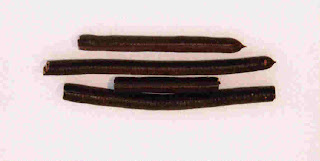The roving cavaliers of credit
The latest Steve Keen post is essential reading. Some quotes:
---
The standard money multiplier model’s assumption that banks wait passively for deposits before starting to lend is false. Rather than bankers sitting back passively, waiting for depositors to give them excess reserves that they can then on-lend in the real world, banks extend credit, creating deposits in the process, and look for reserves later.
---
The point made by endogenous money theorists is that we don’t live in a fiat-money system, but in a credit-money system which has had a relatively small and subservient fiat money system tacked onto it.
We are therefore not in a “fractional reserve banking system”, but in a credit-money one, where the dynamics of money and debt are vastly different to those assumed by Bernanke and neoclassical economics in general.
---
The money multiplier model implies that, whatever banks might want to do, they are constrained from so doing by a money creation process that they do not control.
However, in the real world, they do control the creation of credit. Given their proclivity to lend as much as is possible, the only real constraint on bank lending is the public’s willingness to go into debt ... that willingness directly relates to the perceived possibilities for profitable investment—and since these are limited, so also is the uptake of debt.
But in the real world—and in my models of Minsky’s Financial Instability Hypothesis—there is an additional reason why the public will take on debt: the perception of possibilities for private gain from leveraged speculation on asset prices.
---
The standard money multiplier model’s assumption that banks wait passively for deposits before starting to lend is false. Rather than bankers sitting back passively, waiting for depositors to give them excess reserves that they can then on-lend in the real world, banks extend credit, creating deposits in the process, and look for reserves later.
---
The point made by endogenous money theorists is that we don’t live in a fiat-money system, but in a credit-money system which has had a relatively small and subservient fiat money system tacked onto it.
We are therefore not in a “fractional reserve banking system”, but in a credit-money one, where the dynamics of money and debt are vastly different to those assumed by Bernanke and neoclassical economics in general.
---
The money multiplier model implies that, whatever banks might want to do, they are constrained from so doing by a money creation process that they do not control.
However, in the real world, they do control the creation of credit. Given their proclivity to lend as much as is possible, the only real constraint on bank lending is the public’s willingness to go into debt ... that willingness directly relates to the perceived possibilities for profitable investment—and since these are limited, so also is the uptake of debt.
But in the real world—and in my models of Minsky’s Financial Instability Hypothesis—there is an additional reason why the public will take on debt: the perception of possibilities for private gain from leveraged speculation on asset prices.

Comments
Post a Comment